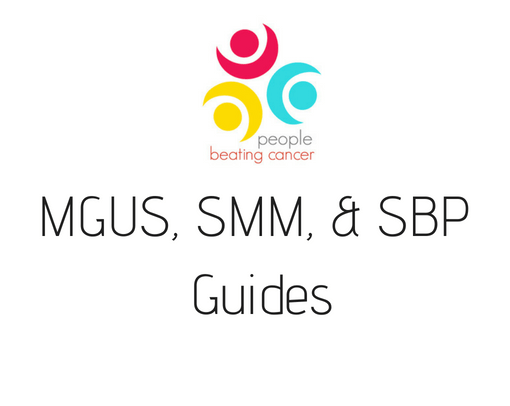
Diagnosed with SMM, SPB, or MGUS?
Learn how you can stall the development of full-blown Multiple Myeloma with evidence-based nutritional and supplementation therapies.
Click the orange button to the right to learn more.
- You are here:
- Home »
- Blog »
- Pre-Myeloma »
- MGUS of Skin Significance
MGUS of Skin Significance

A diagnosis of monoclonal gammopathy of undetermined significance (MGUS) used to be so simple. It used to be all about a possible diagnosis of multiple myeloma in your future. No longer.
According to the article linked below, though MGUS is the most prevalent type of monoclonal gammopathy, it is only one of many MG’s.
Monoclonal Gammopathy of undetermined significance (MGUS) is the most frequent MG, representing about 55% of all MGs [3]. MGUS is a common finding in daily clinical practice. The prevalence of MGUS is about 3.2% in people 50 years of age or older [4], but it depends on age, race, family history, and the screening method used… Overall, people with MGUS have a global risk of progression of approximately 1% per year [9], with IgM and non-IgM different modes of progression [10]. A common risk score for estimating the probability of progression is based on the serological subtype of MGUS, the M protein level, and the free light chain (LC) ratio (FLCr) [11].
While PeopleBeatingCancer focuses on cancers and the many side effects caused by chemotherapy and radiation, I am including several blog posts in my treatment of pre-myeloma that address monoclonal gammopathies (MG) in general that are not MGUS.
This post deals with monoclonal gammopathy of skin significance. Meaning, if you are diagnosed with MGUS and are told that it is asymptomatic yet you have skin symptoms.
Read about MGUS causing skin symptoms-
- MGUS Survivor Story- Mary Slocum
- MGUS- Kidney, Bone, Blood, Skin Damage
- MGUS W/ bizarre symptoms
- Can MGUS Spur Non-Melanoma Skin Cancers?
Have you been diagnosed with MGUS and you have skin symptoms? But you oncologist is telling you that your symptoms have nothing to do with your MGUS diagnosis? You might have MGCS not MGUS. Scroll down the page, post a question or comment and I will reply to you ASAP.
To Learn About Pre-Myeloma (SPB, MGUS, MGCS, SMM), diagnostics, symptoms and therapies- click now
David Emerson
- MM Survivor
- MM Cancer Coach
- Director PeopleBeatingCancer
Monoclonal Gammopathies of Clinical Significance: A Critical Appraisal
“Monoclonal gammopathy of clinical significance (MGCS) refers to a recently coined term describing a complex and heterogeneous group of nonmalignant monoclonal gammopathies. These patients are characterized by the presence of a commonly small clone and the occurrence of symptoms that may be associated with the clone or with the monoclonal protein through diverse mechanisms. This is an evolving, challenging, and rapidly changing field. Patients are classified according to the key organ or system involved, with kidneys, skin, nerves, and eyes being the most frequently affected…
Monoclonal Gammopathies of Skin Significance
Some dermatologic entities are strongly associated with the presence of a MG, and they should be referred to as MGSS. Again, the demonstration of the association between the M-protein or the clone itself with skin damage is key. As expected, a skin biopsy plays a critical role in the diagnostic process. The direct toxicity of M-protein, host immune abnormalities, specific cytokines, and PC infiltration can, among other mechanisms, produce severe skin manifestations. Thus, MGSS has been classically divided into four different groups according to the type of clone and the type of association between the cutaneous disorder and the underlying MG [69,70] (Table 5):
Cutaneous manifestations of monoclonal gammopathy
“Monoclonal gammopathy associated with dermatological manifestations are a well-recognized complication. These skin disorders can be associated with infiltration and proliferation of a malignant plasma cells or by a deposition of the monoclonal immunoglobulin in a nonmalignant monoclonal gammopathy. These disorders include POEMS syndrome, light chain amyloidosis, Schnitzler syndrome, scleromyxedema and TEMPI syndrome. This article provides a review of clinical manifestations, diagnostics criteria, natural evolution, pathogenesis, and treatment of these cutaneous manifestations.






